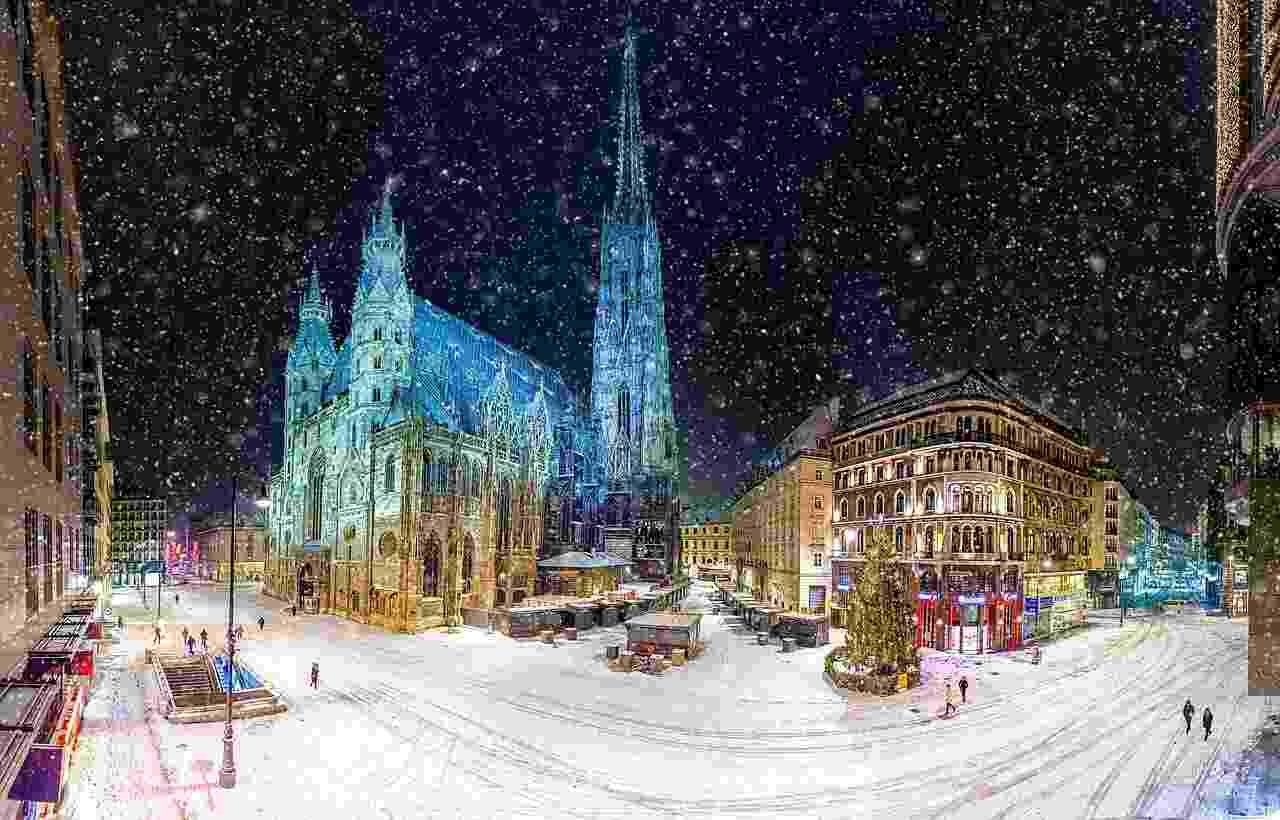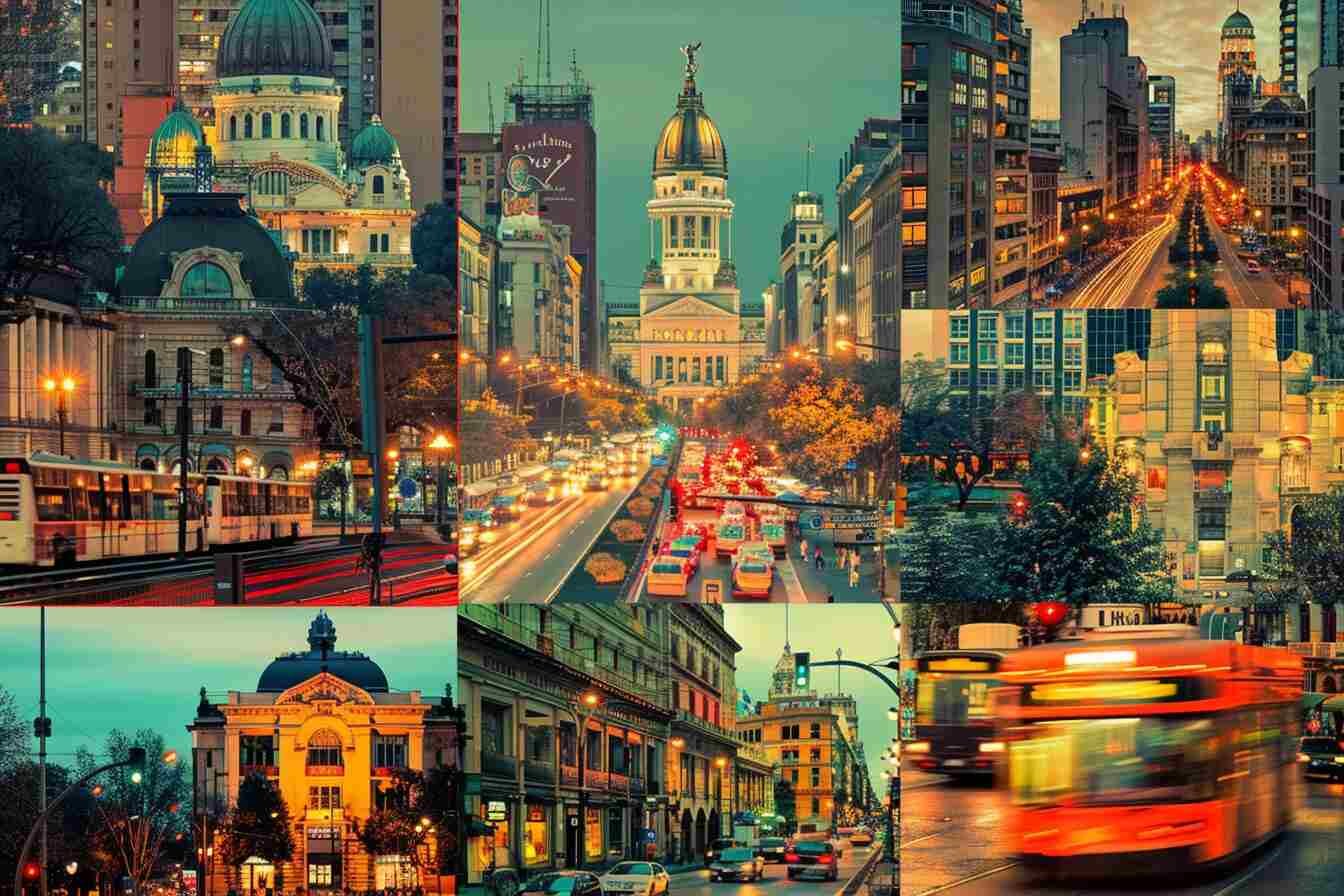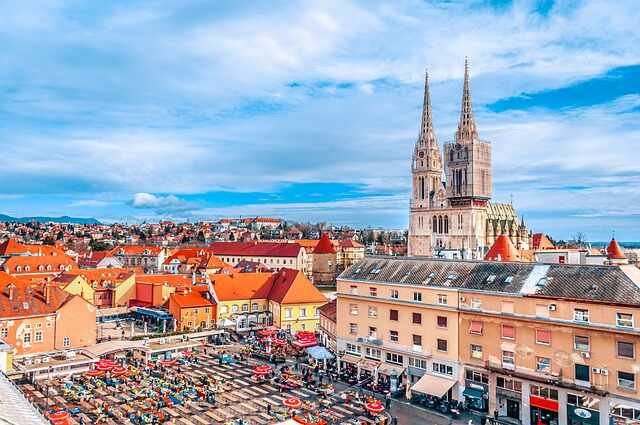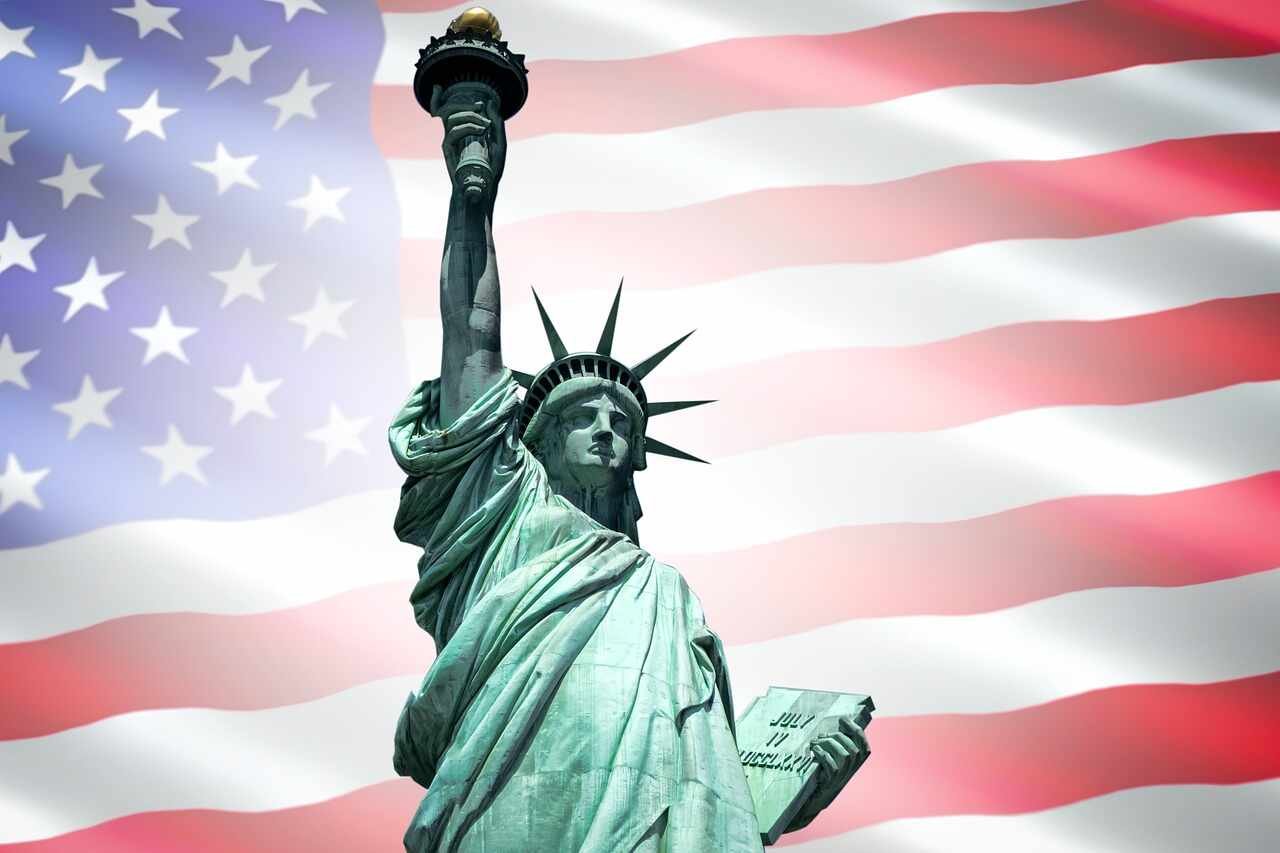Visit Vienna: The Imperial City
Vienna, with its monuments, its culture, its animation, is one of the most attractive European capitals. In this article, I tell you everything to visit Vienna in 4 days, how to reach Vienna from the airport, where to go out in Vienna and where to sleep in Vienna, in short! A lot of tips to make the most of your 4-day stay in Vienna.
Visit Vienna: what are the best things to do and see in the Austrian capital? Discover our essentials to make the most of your stay.

Collage of Vienna with pictures of Vienna City Hall, Schönbrunn Palace, Wiener Riesenrad, State Opera house, St. Stephen’s Cathedral, Kunsthistorisches Museum, view of Vienna towards the Vienna Woods, Sachertorte, monument to Johann Strauss II, Secession hall, Donau City, and Hundertwasserhaus. Domser, CC BY 3.0, via Wikimedia Commons
1. Innere Stadt (historic city center)
Start with the historic city center of Vienna called Innere Stadt, a magnificent district rich in monuments and prestigious museums, it is a pleasure to walk there!
You can if you wish, use the Bus Hop On Hop Off, it is very convenient because it allows to visit Vienna in a convertible bus, moreover it passes by the essential sites of Vienna, so you can get off, visit the monument , then take the bus as many times as you want.
Hofburg Imperial Palace
Imperial Palace, residence of the Habsburgs dynasty for 6 centuries, huge and truly impressive: it is a real city within the city. It houses the Sissi Museum (one of the most visited in Vienna).
If there is one thing to do in Vienna, it is to visit the Hofburg Palace. Nothing symbolizes Austria’s culture and heritage more than its Hofburg Imperial Palace. The Habsburgs lived here for more than six centuries, from the first emperor (Rodolphe I in 1273) to the last (Charles I in 1918).
The Hofburg owes its size and architectural diversity to the outbidding of each of its new emperors: new sections have been added over the centuries such as the Baroque-style Leopold wing, the 18th century chancellery wing, the Amalia wing and the Burgkapelle (Royal Chapel).
The oldest part of the palace is the 13th century Schweizerhof courtyard, named after the Swiss guards who served to protect its enclosure. The Renaissance-style Porte des Suisses dates from 1553. This courtyard adjoins another larger courtyard, In der Burg, with a monument to Emperor Francis I adorning its center. The palace now houses the offices of the Austrian President and a series of museums.
Hofburg palace with Archduke Karl monument in Vienna. The Hofburg is the former principal imperial palace of the Habsburg dynasty. Located in the centre of Vienna, it was built in the 13th century and expanded several times afterwards. Bwag, CC BY-SA 3.0 AT, via Wikimedia Commons
Difference between Hofburg and Schönbrunn
The Hofburg, or the other residence of the Imperial family. The difference between the two? While Schönbrunn is a huge palace located away from the city center and it was the summer residence of the imperial family, Hofburg is an enclave/land right in the middle of historic Vienna and the Hofburg was the winter residence of the ancient imperial family. In Hofburg they don’t the pretty French-style park of Schönbrunn. The Hofburg Palace brings together a set of buildings and museums of various styles, and today we find both the offices of the President of the Republic and the Spanish riding school or the Austrian national library. But they also house the Sissi Museum, the royal apartments and the silverware museum.
Access
You can access the interior of the Hofburg Palace by several accesses, whether you come from the Volksgarten or Heldenplatz, on which many horse-drawn carriages are waiting for rent. In any case, we quickly find the entrance, since Hofburg is also full. Many tourists want to visit the Sissi Museum, to the point that from time to time you have to walk in single file and wait your turn. Moreover, before visiting the Sissi Museum, it is imperative to cross the silverware museum. Anyway, I couldn’t find a way to do otherwise…
Stephansdom, St. Stephen’s Cathedral in Vienna
Majestic, called “Steff’l” by the Viennese who adore her, one of the best examples of Austrian flamboyant Gothic. Free entrance to the Church.
If you like history, we recommend a guided tour of the historic districts of Vienna.
The famous St. Stephen’s Cathedral is located in Vienna’s central square, Stephansplatz. It is one of the most touristic places of interest in the city.
Built from the 14th century on the ruins of an old church, the cathedral is a magnificent example of Baroque and Gothic architecture. Its roof, with colorful tiles representing the 2-headed eagle k.u.k and the coats of arms of Vienna and Austria is really impressive.
The interior of the cathedral is well worth a visit to admire in particular the relics adorned with gold and precious materials and the catacombs where the tombs of Emperor Frederic III and Prince Eugene of Savoy are located.
Finally, to end your visit in style, we recommend that you climb the 343 steps to access the Turmerstube, which offers a breathtaking view of all of Vienna.
To not miss anything during your visit to the cathedral, we advise you to buy an all-inclusive ticket, which will also save you from queuing at the entrance!
What’s great is that this ticket also includes a visit to the cathedral museum and a guided tour of the catacombs.

Exterior of St. Stephen’s Cathedral, Vienna. Afifa Afrin, CC BY-SA 4.0, via Wikimedia Commons
The Staatsoper (Opera)
It is the Vienna National Opera where places are reserved several months in advance, Music is part of Viennese culture (Mozart lived there). However, for at € 4, you can attend the performance standing up, that’s a good tips!

Rear of the opera house, showing the stage wings. Granada, CC BY-SA 4.0, via Wikimedia Commons
Museum of Fine Arts (Kunsthistorisches Museum, Maria Theresien Platz)
It’s the KHM! Huge art collections brought together by the Habsburgs (250,000 works), the best for lovers of classical painting… But impossible to see everything at once! closed on Mondays. €12 or €18 with temporary exhibitions.

Kunsthistorisches Museum in Vienna with Maria-Theresien-Platz. Manfred Werner – Tsui, CC BY-SA 3.0, via Wikimedia Commons
The Spanish Riding School, Spanische Hofreitschule
Internationally renowned with an absolutely magnificent show every Saturday (except in July and August). Reservation required, tickets are not given away, between € 22 and 135 but for € 12, you can attend pre-show training. Located between Michaelerplatz and Josefsplatz inside the Hofburg in central Vienna. Horse shows are held in the Winter Riding School (Winterreitschule) of the Spanish School which was built between 1729 and 1735.
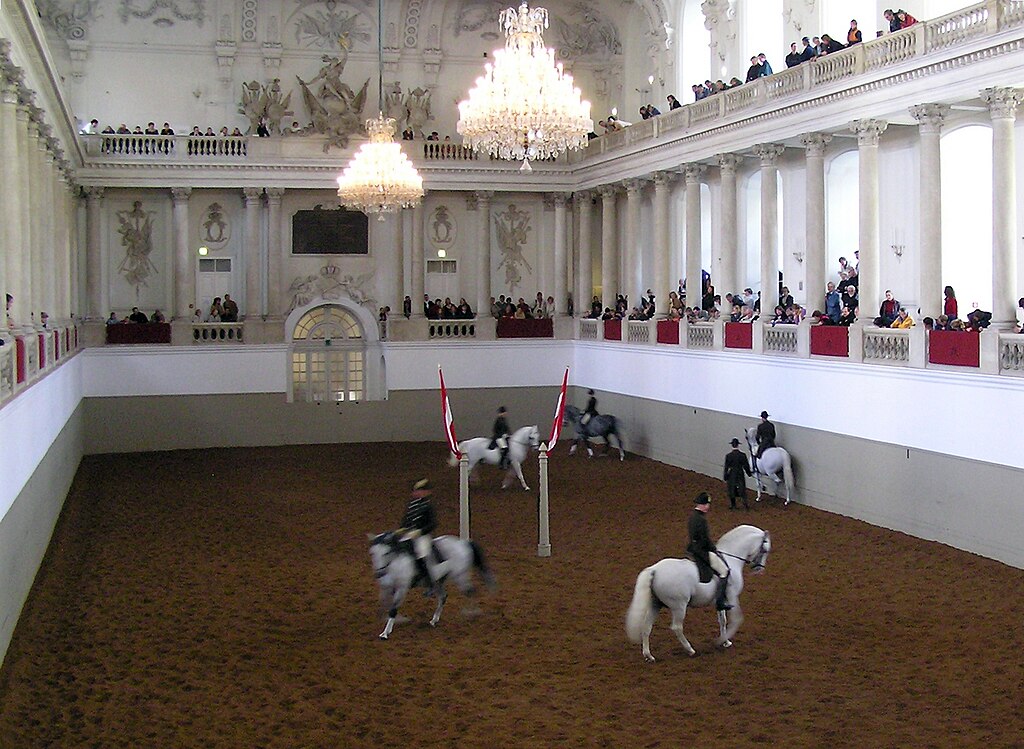
Spanish Riding School Lipizzaners performing in the Winter Riding Hall. Lipizzan is a horse breed named for the Lipizza Stud of the Habsburg monarchy. sparre, CC BY-SA 3.0, via Wikimedia Commons
The Albertina Museum
Highly renowned, with a unique collection of works by Dürer. Located at Albertina Platz in the 1°arr. There is the tourist office on this square, you can pick up the Vienna Car there.
Albertina in Vienna is located in the first district, near the Hofburg Palace. The museum is located in the Palais Archduke Albrecht, which was built from 1742 to 1745 as the Palais Taroucca. From 1801 to 1804, Louis Montoyer extended the building to include parts of the Augustinian monastery, and in 1867 the façade was partially redesigned.
Built in 1801 to house drawings, prints and watercolors collected by Duke Albert of Saxe-Teschen, daughter-in-law of Marie-Therese of Austria, it is now a museum.
Albertina’s collection of graphic arts is now one of the richest in the world, consisting of nearly a million prints and over 65,000 drawings by masters, from Durer, Rubens, Rembrandt, Michelangelo, Raphael, Leonardo da Vinci, and, to modern day, Douard Manet, Modigliani, Cézanne, Klimt or Schiele.
Albertina museum in Vienna. Exterior view of the Albertina with the Soravia Wing. Hannes Sallmutter, CC BY-SA 3.0, via Wikimedia Commons
Read also: Most Famous Paintings in the World
Vienna City Hall (Rathaus)
The neo-Gothic building (built in 1883) located on Rathausplatz, is the heart of Viennese political life. It is the seat of the mayor of Vienna and also an important place where public events are held.
It also has a restaurant where you can enjoy traditional Viennese dishes (Viennese Schnitzel or Apple Strudel for example).
Entrance to the building is free and free guided tours are organized (but only in German). You can also opt for a free multilingual audio guide.
During the holiday season, there are Christmas markets located in front of the Town Hall. Usually there is also an ice rink, but it is often crowded. The whole area is illuminated and beautifully decorated and there is always a holiday atmosphere.
A visit to the town hall is possible on Mondays, Wednesdays and Fridays at 1 p.m., except on public holidays and days of important meetings. More information at the city information center.
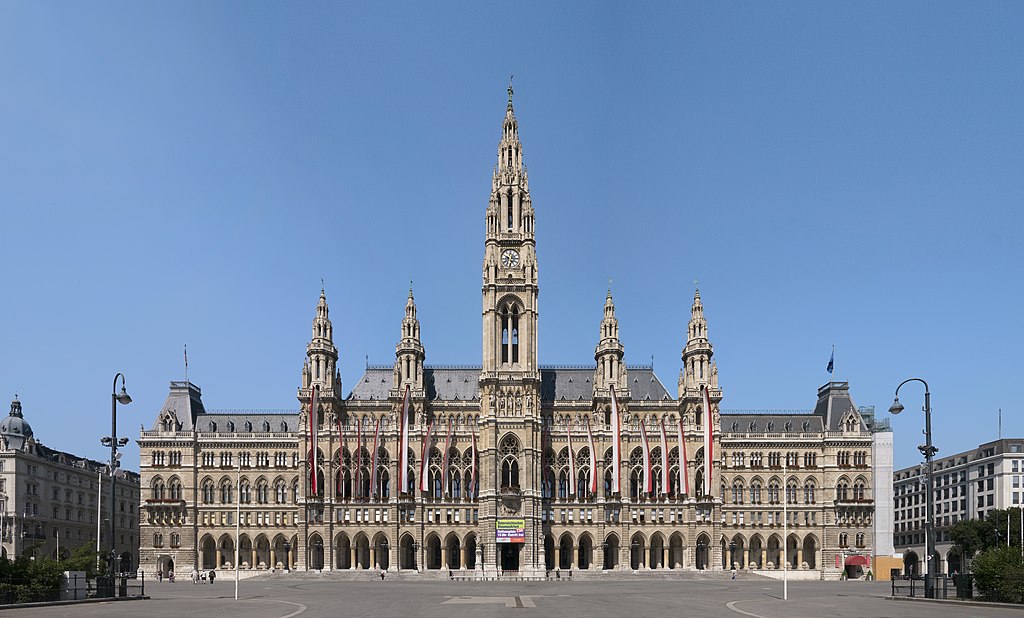
Vienna City Hall at Rathausplatz. Thomas Ledl, CC BY-SA 4.0, via Wikimedia Commons
Capuchin Crypt Vienna (Kapuzinergruft) | The burial place of the Habsburg imperial family
The Capuchin Crypt in Vienna contains the tombs of the House of Habsburg since 1633, a family that reigned over the Holy Roman Empire and Austria as well as Hungary and Bohemia (apart from the last emperor, Charles I, buried in Madeira).
The Museum Quartier or Museum Quarter of Vienna (7th district. 1 MuseumPlatz)
One of the 9 largest sets of museums in the world, of international level, exciting, decorated with multiple cafes, gastronomic restaurants, with a juxtaposition of renovated baroque buildings and futuristic architecture.
If you come to visit Vienna, you absolutely have to go to the MuseumsQuartier! Once serving as imperial stables, the Museums Duartier is now a beautiful place to relax and people watch, but above all to appreciate art. This fertile ground of Viennese cultural life spans over 60,000 square meters of exhibition space, with the complex being one of the most ambitious cultural spaces in the world. There is a remarkable collection of museums, cafes, restaurants and bars.
Three museums immediately stand out here: the Leopold Museum, the Kunsthalle Vienna, and the Museum of Modern Art Mumok (Museum of Modern Art Ludwig Foundation Vienna). If you don’t have the time or the courage to do them all, bet on visiting the Leopold Museum instead with its remarkable group of Austrian greats and its glass-walled café.
The main museums in the Museum Quartier are:
The Leopold Museum and its great collection of works by Schiele.
The ZOOM museum, for children, brilliant.
Me Muséee MUMOK museum of modern art. It is inspired by the Guggenheim in New York, with extraordinary modern architecture and a prestigious collection of popart and contemporary art (Kandisky, Magritte, Giacometti, Klee).
Unmissable walk along the Ring strasse:
This magnificent avenue encircles the historic center of Vienna, it is about 4 km long: In the evening, it is even more beautiful! You will pass in front of the Museum of Fine Arts, the Parliament, the Town Hall, the Palace of Justice, the Burg Theater, the Opera.
There is also the Hop On Hop Off Bus during the day which passes through the Ring Strasse route. You will see that it really goes everywhere!

From top, left to right: Kunsthistorisches Museum, City Hall, St. Stephen’s Cathedral, Vienna State Opera, and Austrian Parliament Building. Eliza0027, CC BY-SA 4.0, via Wikimedia Commons
The Maria Theresa Monument on Maria-Theresien-Platz in Vienna’s 1st district
The Maria Theresa (Marie Therese of Austria) Monument on Maria-Theresien-Platz in Vienna’s 1st district, Inner City.
The most impressive work of recent plastic art in Vienna was created in 13 years (model 1874, completion 1887) by Caspar von Zumbusch (sculptures) and Carl von Hasenauer (building) and unveiled on May 13, 1888, the birthday of the ruler. On the 4 wings of the base are the equestrian statues of the generals Gideon Ernst Freiherr von Loudon, Leopold Graf Daun, Ludwig Andreas Graf Khevenhüller and Otto Ferdinand Graf Abensberg-Traun. The 4 pages of the central structure each deal with a topic (advisor to the empress, administration, military as well as science and art. A free-standing figure is shown in each case (adviser: Wenzel Anton Dominik Graf Kaunitz; administration: State Chancellor Friedrich Wilhelm Graf Haugwitz, creator of the administrative reform; military: Joseph Wenzel Prince Liechtenstein, reorganizer of the gun system; science and art: personal physician Gerard van Swieten, reformer of the university) and 16 figures in front of the high reliefs in the 4 arched fields. Bwag, CC BY-SA 4.0, via Wikimedia Commons
2. Schönnbrun Palace and its sublime gardens (14th district)
This Austrian Versailles is one of the most visited castles in the world! Symbol of the elegance and beauty of Imperial Vienna, it is listed as a UNESCO World Heritage Site.
Visit Vienna without visiting Schönbrunn Palace? Impossible. Schönbrunn Palace was for a long time the summer residence of the Habsburg royal family. This castle whose name means “magnificent spring” is surely the greatest rival of French’s Palace of Versailles, but Schönbrunn Palace is more simple in decorations.

Schönbrunn palace view from the main entrance. Simon Matzinger, CC BY-SA 3.0, via Wikimedia Commons
3. Naschmarkt (located from 4th to 6th district. U1, U2, U4, KarlPlatz stop)
Here too, you are going to enjoy yourself, friends, because this permanent market is a real institution in Vienna! You will also find plenty of bars, inns, theatres, in short, enough to spend great moments. Not to miss!
What to do in Vienna when you want to visit Vienna under the eyes of a local? Go to the Naschmarkt! It is one of the most eclectic markets in Vienna and it is open from Monday to Saturday.
Admire the bounty on the stalls, from buckets of tulips to pickles, wines to plump purple figs, and stop for lunch at one of the hip or pioneering establishments like Do-An, Tewa, or Naschmarkt Deli.
If you come on a Saturday, be sure to arrive early in the morning to get the best deals. On weekends, the place is very lively. All around the market, there are beautiful buildings.
Typical market stall at the Naschmarkt in Vienna, Austria. Bwag, CC BY-SA 4.0, via Wikimedia Commons
4. Danube river
The “Beautiful Blue”! Mythical river that adds to the magic of Vienna, a sure favourite, believe me!
Take a boat trip, it’s a great moment. There are several cruises, one of which is absolutely magical!!

Panorama of the Danube, Vienna. Dmitry A. Mottl, CC BY-SA 3.0, via Wikimedia Commons
How to reach Vienna from Schwechat Airport (VIE)
Vienna-Schwechat airport is located 20 km from the city center (south-east) which you can reach by 3 means:
The CAT (City Airport Train): Adult € 11 (one way) or € 19 (roundtrip) Children: € 11 (6-14 years) under 14 years free, direct to Vienna Mitte Station (3rd district), the fastest, 16 min journey. The station is located at the airport so it is the easiest and fastest solution to reach Vienna (central station Wien-Mitte).
To find the station simply follow the green “CAT” signs. Timetable 6 a.m. to 11:30 p.m., with a train every 30 minutes. To reach the airport from the train station, the hours are 5:30 a.m. to 11 p.m. Note that the ticket for children under 14 is free.
Once at Vienna train station you can take the metro to reach the center of Vienna. You will see it is very well done.
Otherwise you have the bus: € 8, several stops in Vienna, 25 min journey.
Taxis: interesting for several people, around € 40-55.
Vienna metro ticket prices
And if you think you’ll be out of the way a bit to pay less, be aware that the single metro ticket is relatively expensive (a metro/tramway/bus ticket costs €2.40 (-50% for children). The ticket is valid until arrival at destination (changes included) So if you are 2, you will easily have transport for 25€ per day… or you can buy 24 – 72 hours ticket, starting from € 8 (https://www.wien.info/en/travel-info/transport/tickets-361360). Think about it…
Where to sleep in Vienna? Best place to stay in Vienna
You are visiting Vienna, this magnificent, artistic, cultural, gastronomic city, with a rich past as evidenced by its exceptional architectural heritage, and you want to know the best neighborhoods and addresses where to sleep in Vienna, then this article is for you!
For those who are in a hurry, here is where to stay in Vienna to make the most of your stay.
Vienna is divided into 22 districts that wind clockwise around the famous Innere Stadt (1st district), Vienna’s historic district (1st district): here are the most interesting ones to visit:
Inner City (1st district)
This district is the real historical and touristic heart of Vienna. It is surrounded by a prestigious avenue, the Ring. Take the ride with the Hop On Hop Off, you will have a great overview of this fabulous district. If you live in this district, it’s easy to walk and reach historical places.
District Leopoldstadt (2nd district)
Interesting especially for the huge green park, the famous Prater, its Ferris Wheel with a panoramic view, and its permanent fairground Metro U1, U2, Praterstern stop. There is also the biggest nightclub in Austria!
District Landstrasse (3rd district)
Especially interesting by the eco-delirious constructions to see absolutely, of the architect Hundertwasser.
Neighborhoods along the Ring, to the West (6th district)
This is the famous district where the Nashmarkt is located, an extra permanent market, an atmosphere at the top of the top! Subway U1, U2, U4, KarlPlatz station. A must in Vienna!
Hiezting district (13th district)
To do absolutely: this is where you will visit Schönbrunn Palace, metro U4, Schonbrünn station.
Do not hesitate to leave a comment at the bottom of the page to give us your impressions about Vienna, share good address, hotels, bars… Sharing is good 😉
http://cleverlysmart.com/europe-travel-guide-book-bucket-list-ideas-and-places-to-visit-north-south-east-west/
Sources: PinterPandai, Time Out, The Crazy Tourist, Travelling Buzz, PlanetWare
Information: prices and opening and closing hours of attractions are subject to change without prior notice.
